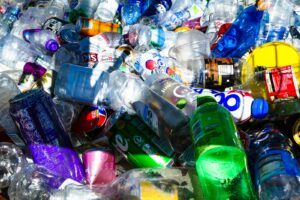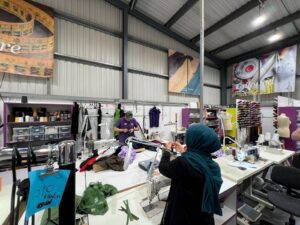How businesses can help to solve the e-waste crisis
Fredrik Forslund from VP Enterprise & Cloud Erasure Solutions writes for Environment Journal about what businesses can do to ensure that their old electronics are properly disposed of and recycled to help solve the mounting issue of electronic waste.
We’ve witnessed some high-profile events in the past year which have shone a light on the urgency to protect our planet. Fires in the Amazon Rainforest and Australia, the United Nations’ Climate Change Conference or Antarctica’s new record high temperature, to name a few.
And while the pandemic has pressed a pause button on the climate conversation, it’s resulted in positive reductions in air pollution and greenhouse gas emissions.
But, not all the environmental consequences of the crisis have been positive. The seismic global shift to a remote working culture has seen a spike in demand for hardware, as organisations rally to provide kit for staff at home. With more devices out there, e-waste numbers are set to increase in the future.
According to the World Economic Forum (WEF) and the UN E-waste Coalition, approximately 50 million metric tons of e-waste are already being produced each year—the equivalent in weight to the total number of commercial aircraft ever built. This could double to 100 million tons by 2050.
The e-waste problem
One of the primary causes of this growing global e-waste issue is the methods used to process hardware at end-of-life.
Latest research shows that more than a third of organisations use inappropriate data removal methods despite having a Corporate Social Responsibility (CSR) policy in place. This may put their business at risk of negatively impacting both their security posture and the environment.
These methods include physically destroying end-of-life IT assets, typically involving shredding or crushing the equipment to ensure data is removed from the device.
As IT assets often contain toxic or hazardous materials, such as mercury and lead, these methods can, therefore, put harmful waste into the environment if not done properly and fail to supply a proper audit trail. These materials can also harm anyone who is exposed to them.
If these practices are damaging natural environments, why are so many organisations today still choosing to physically destroy equipment, instead of putting it back into the circular economy or keeping unnecessary data inactive corporate environments?
The answer lies in three major areas.
First, a lack of education. Over a third (39%) of organisations physically destroy end-of-life IT equipment because they believe it to be ‘better for the environment.’
Physically destroying IT assets, when accompanied by a certificate of destruction and a full audit trail, is a valid data disposal option when hardware has reached end-of-life.
However, improperly discarded technology can produce hazardous waste such as toxic pollutants that can pollute land and water, or carbon emissions. It can also lead to material scarcity and provide unauthorised data access to bad actors if data is unprotected.
Second, a lack of ownership and communication. Dealing with end-of-life equipment is part of the majority of organisations’ CSR policy (91%) but there is no clear ownership for implementation and this isn’t being communicated or properly enacted across the business. Indeed, a third of organisations have yet to communicate existing CSR policies across their organisations.
Finally, a lack of robust regulations.
Environmental regulations are often non-existent, patchworked, poorly enforced or difficult to fulfil. In the U.S. alone, 22 states do not have state-wide e-waste laws. And despite the existence of the EU’s WEEE Directive and WEEE Regulations (2013), the U.K. missed its targets in 2018 and is one of the worst offenders for exporting waste to developing countries. Radical action and more robust regulations are needed.
Protecting our planet
Organisations today are quick to say they have CSR policies in place, but are they really putting these policies into action and in the right way? Sadly not. Our survey reveals that only 24% of end-of-life equipment is currently being recycled.
This is astounding considering that the material value alone of yearly e-waste amounts to $62.5 billion. According to the WEF and the UN E-waste Coalition, there is more gold in a metric ton of mobile phones than there is in a metric ton of gold ore.
To reverse the trend and make sure they both reduce their environmental impact and demonstrate true corporate social responsibility, there are three steps that organisations should consider the following:
- Stop unnecessary physical destruction – destroying IT assets that could be recycled, reused, and resold is not the best choice for the environment. Instead, consider software-based data erasure to securely remove data from assets before they’re reused or resold, and document a full audit trail to reduce your data footprint and related costs. This will enable the IT assets to be kept in the circular economy.
2. Start recycling in a responsible way – if the assets are broken or faulty and cannot be resold, reused, or donated, send them to an environmentally friendly recycler or ITAD to make sure they do not end up in landfills.
3. Communicate about your policy regularly – make sure your policy and corporate sustainability initiatives are being clearly communicated across the entire organisation on a regular basis and that data erasure is consistently employed.
To truly become a sustainable workplace, organisations must make sure that all their IT assets and related processes are included in their corporate sustainability initiatives.
By doing so, they’ll also ensure to play their part in solving the e-waste crisis and protecting our planet. And at a time when more and more devices are starting to gather in people’s home offices and the enterprise, it’s crucial that they pay attention to what they have.
Photo Credit – Pixabay















